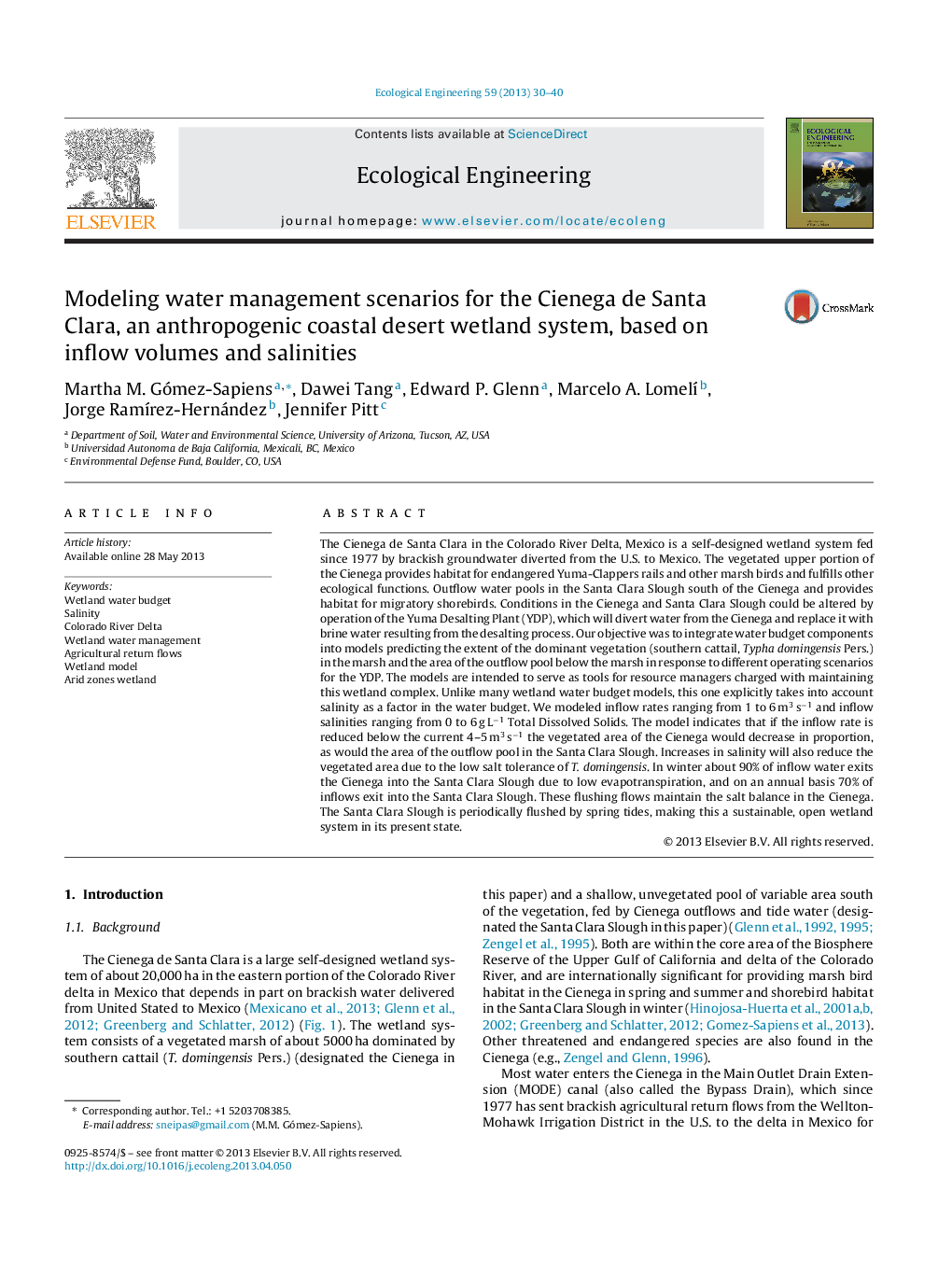| Article ID | Journal | Published Year | Pages | File Type |
|---|---|---|---|---|
| 4389709 | Ecological Engineering | 2013 | 11 Pages |
The Cienega de Santa Clara in the Colorado River Delta, Mexico is a self-designed wetland system fed since 1977 by brackish groundwater diverted from the U.S. to Mexico. The vegetated upper portion of the Cienega provides habitat for endangered Yuma-Clappers rails and other marsh birds and fulfills other ecological functions. Outflow water pools in the Santa Clara Slough south of the Cienega and provides habitat for migratory shorebirds. Conditions in the Cienega and Santa Clara Slough could be altered by operation of the Yuma Desalting Plant (YDP), which will divert water from the Cienega and replace it with brine water resulting from the desalting process. Our objective was to integrate water budget components into models predicting the extent of the dominant vegetation (southern cattail, Typha domingensis Pers.) in the marsh and the area of the outflow pool below the marsh in response to different operating scenarios for the YDP. The models are intended to serve as tools for resource managers charged with maintaining this wetland complex. Unlike many wetland water budget models, this one explicitly takes into account salinity as a factor in the water budget. We modeled inflow rates ranging from 1 to 6 m3 s−1 and inflow salinities ranging from 0 to 6 g L−1 Total Dissolved Solids. The model indicates that if the inflow rate is reduced below the current 4–5 m3 s−1 the vegetated area of the Cienega would decrease in proportion, as would the area of the outflow pool in the Santa Clara Slough. Increases in salinity will also reduce the vegetated area due to the low salt tolerance of T. domingensis. In winter about 90% of inflow water exits the Cienega into the Santa Clara Slough due to low evapotranspiration, and on an annual basis 70% of inflows exit into the Santa Clara Slough. These flushing flows maintain the salt balance in the Cienega. The Santa Clara Slough is periodically flushed by spring tides, making this a sustainable, open wetland system in its present state.
